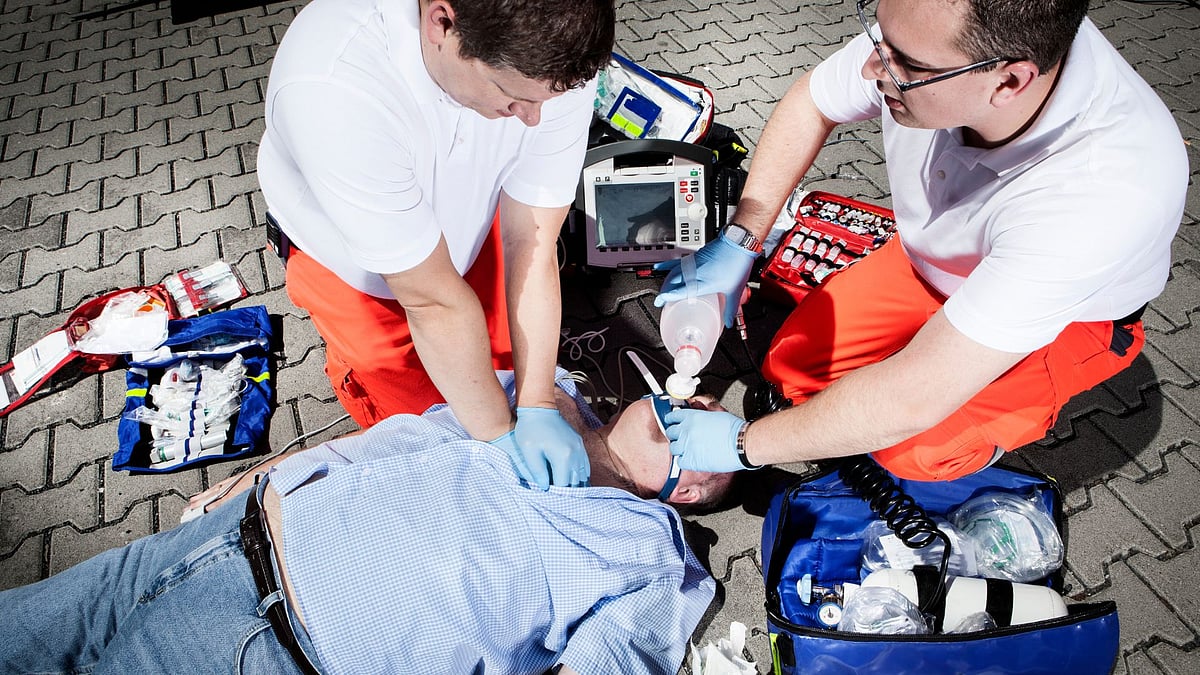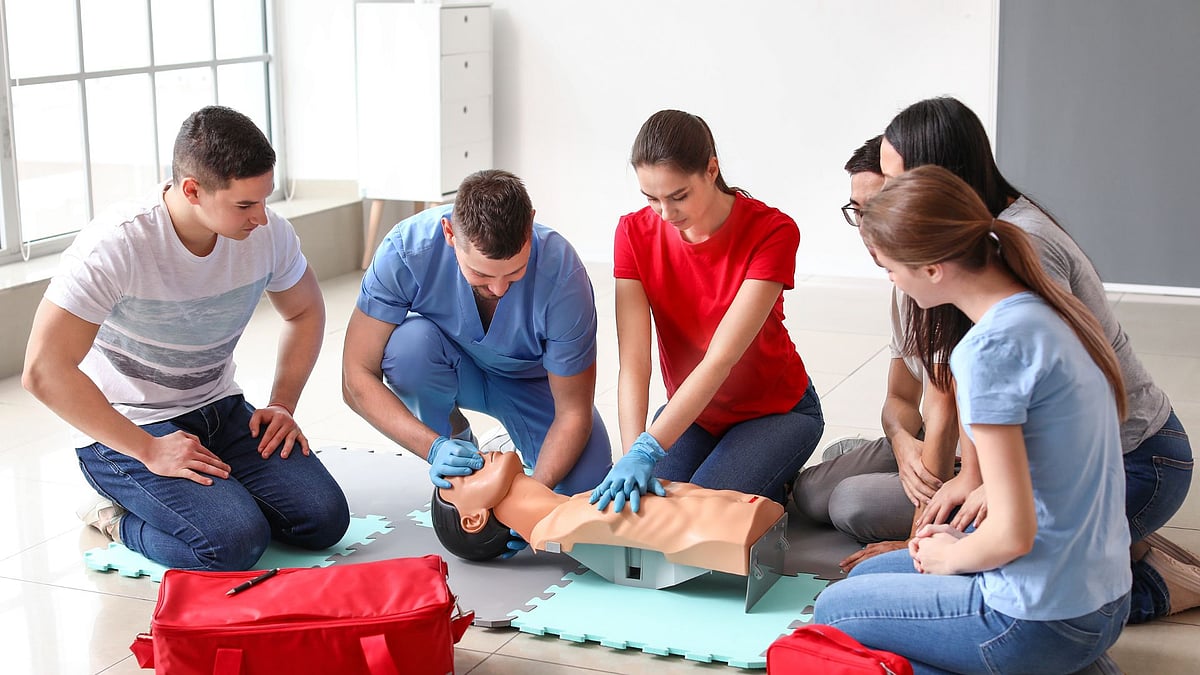Heart Attack is a common cause of fatalities, especially in a country like ours. People consume a rich calorie diet that is responsible for surge in their cholesterol levels. A heart attack is caused when the arteries supplying blood to the heart get blocked due to high cholesterol levels and it just stops pumping.
A person often collapses during a heart attack and loses consciousness. Do you know that if this happens to someone in front of you, you can help them and possibly save them? Instead of just being a bystander or recording a video for Instagram, you can perform a quick CPR (Cardiopulmonary Resuscitation) and get the heart beating again, saving the victim.

Canva
What is a CPR and why is it important?
Cardiopulmonary Resuscitation or CPR is an emergency lifesaving procedure that is performed in case of sudden heart attacked. Performing this procedure can double or triple the chances of survival of the victim.
You do not need to be a medical expert to perform CPR. Anybody can perform it until the medical services get on site. Providing CPR to the person who has had a heart attack can help keeping the blood flow active. It is helpful even if the blood flow is partial so that the medics can reach and take it ahead from there.
How to perform a CPR?
If you come across someone who suddenly collapses and is unresponsive. Check for their pulse. If there is none, call for emergency services and in the meanwhile, start performing CPR.
Lay the person flat on their back on a firm surface. Kneel beside them and place the heel of one hand on the center of their chest, between the nipples. Place your other hand on top of the first and interlock your fingers.

Canva
Perform Chest Compressions
Push hard and fast in the center of the chest. Press down about 2 inches (5 cm) deep and aim for a rate of 100-120 compressions per minute. Let the chest rise completely between compressions.
Give Rescue Breaths
If you're trained, after 30 chest compressions, give 2 rescue breaths. Tilt the person's head back, lift their chin, and pinch their nose. Breathe into their mouth until their chest rises. If you're not trained, continue chest compressions only.
Continue CPR
Keep giving 30 compressions followed by 2 breaths (if trained) until emergency help arrives or the person starts breathing. If you're doing compression-only CPR, continue pushing hard and fast without stopping.











